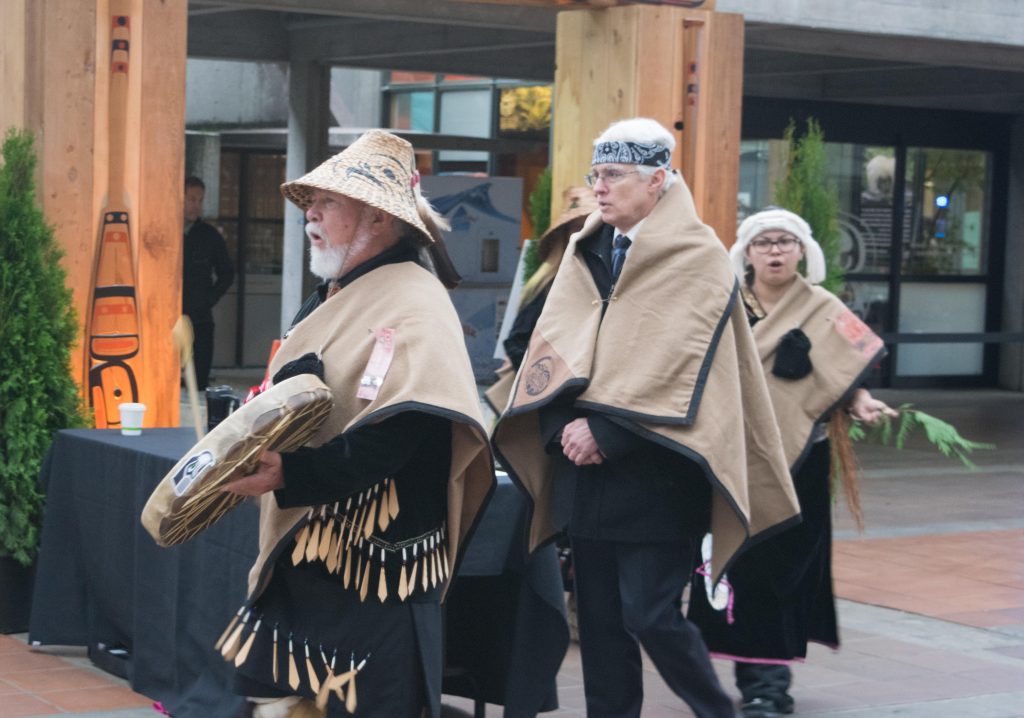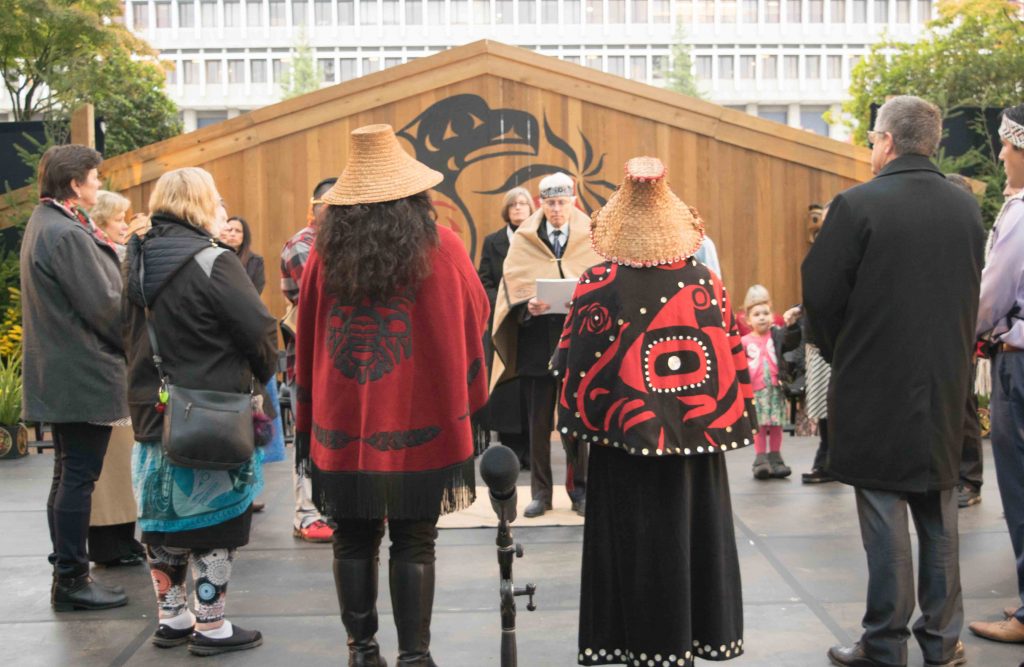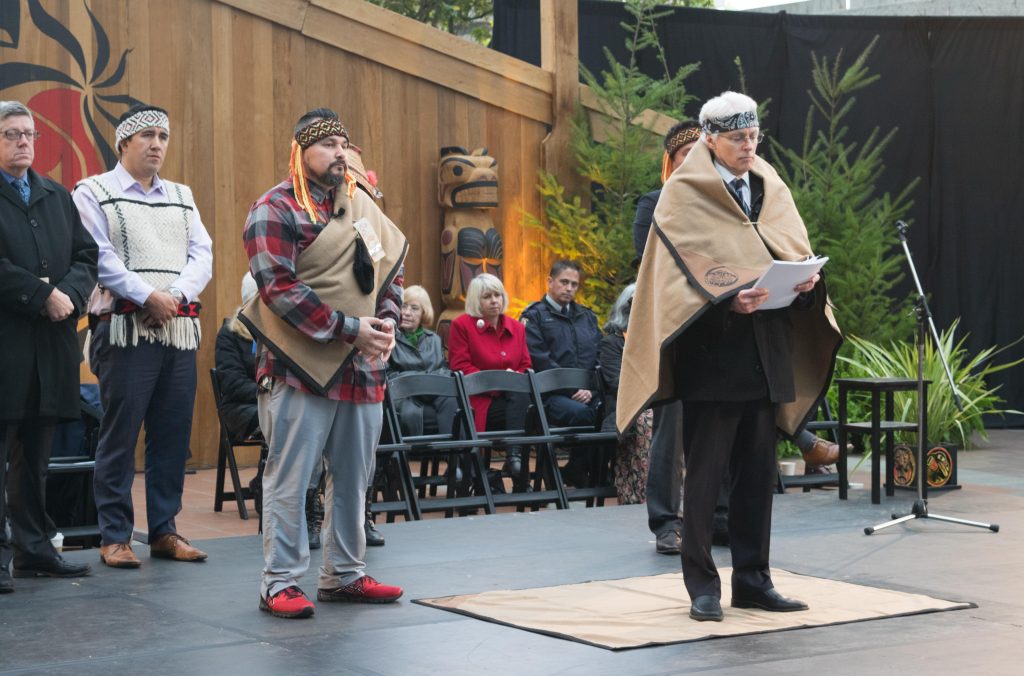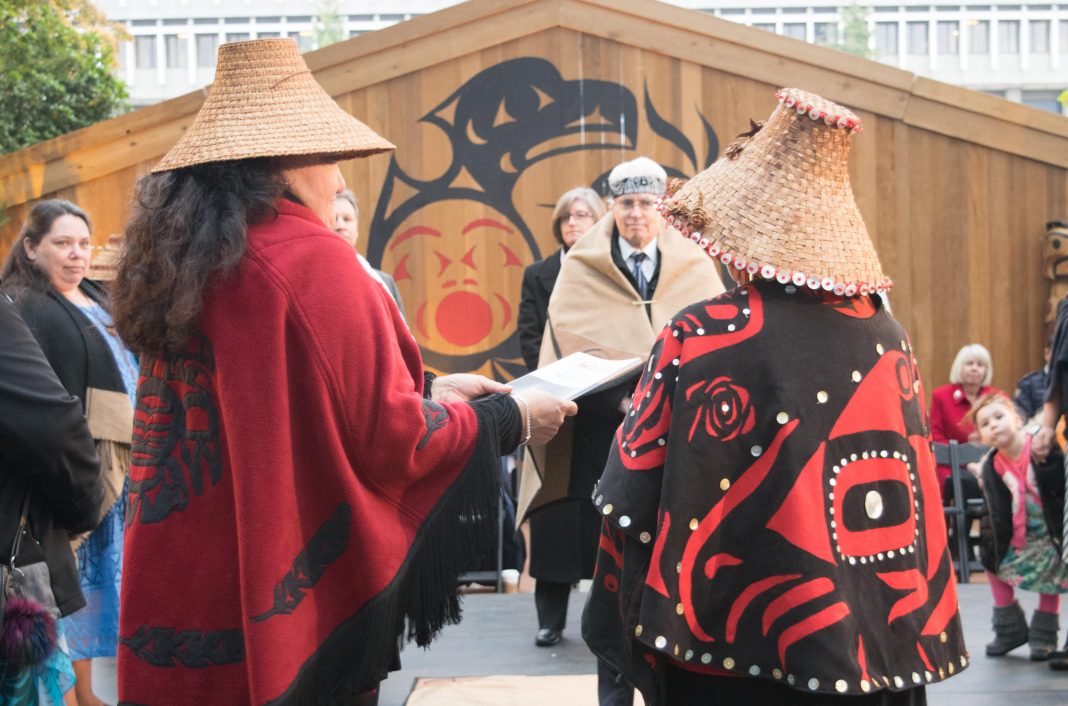Simon Fraser University marked the start of a new journey towards reconciliation at a traditional witnessing ceremony led by members of the Coast Salish First Nations in Convocation Mall on Monday.
The SFU Aboriginal Reconciliation Council handed over its final report Walk this Path With Us consisting of 33 calls to action which will assist in the allocation of $9 million in reconciliation funds over the next three years.
The Coast Salish Kwis Ns7eyx̱, or witnessing ceremony, serves to hold Simon Fraser University accountable to its commitment towards the reconciliation process through oral tradition. The witnesses have the honour of recording and listening to the ceremony, after which they are responsible for sharing what they have seen.

“The job of the witness is to take in and reflect and listen to the words and listen to the work that is going to take place and in that way they record this,” said co-host Gabriel George of the Tsleil-Waututh nation.
“It means many things when we do this work publicly,” he added. “It’s mindfulness and healing.”
SFU’s commitment to the calls to action will be achieved in part by indigenizing curriculum and providing support for Indigenous students, but will also establish community spaces where Indigenous students can feel connected to their culture during their studies.
The ceremony commenced with an opening prayer led by Tsleil-Waututh elder Margaret George. Following formal acknowledgments, witnesses comprised of elders, esteemed community members, and students of SFU were formally introduced.

The space created for the witnessing ceremony emulated a long-house, with cedar branches adorning the sides of the podium, swaying lightly in the brusque air as if anticipating the drummers, whose music invited President Andrew Petter — representing SFU — into ceremonial proceedings.
“It’s wonderful to see the culture, the language, the songs have survived the face of adversity,” said co-host Ian Campbell of the Squamish Nation.
Campbell commended those who made the process at the university possible, and especially the students who “will continue to walk through this door to have a safe space, an inclusive space that honours that our history is your history.”
“It doesn’t just start with 150, but spans millennia and that is something that we can celebrate together — our collective future,” he said.

The spirit of this collective ambition was carried through the ceremony. Representing the university, Andrew Petter accepted the responsibility of maintaining a steady course through inclusivity.
“This university cannot move forward in a way that does not include and respect Indigenous peoples,” said Petter. “‘Nothing about us without us’ is one of the underlying principles, indeed the first principle of this report.”
Witness Charlene Aleck said that the ceremony prompted her to think about her late father who went through the residential school system, but still kept these ceremonies and traditions intact.
“Here we are today practicing those [ceremonies] for future generations that walk through Simon Fraser University,” she said. “We’re laying something down, we’re putting that medicine forward in such a good way.”

The co-chair of the reconciliation council Chris Syeta’xtn Lewis spoke to The Peak about his hopes for the future of this initiative.
“We need to create a better space for Indigenous students,” Lewis added. “Also for all our students in general, to start that education process on [talking about] reconciliation [and] then recognize those past traumas that happened to First Nations students.”
“We need to move forward from that.”





[…] submitted to the Office of the President on June 15. On October 16, a traditional Kwis Ns7eyx̱, or witnessing ceremony, was led in Convocation Mall by members of the Coast Salish First Nations to mark the historic […]